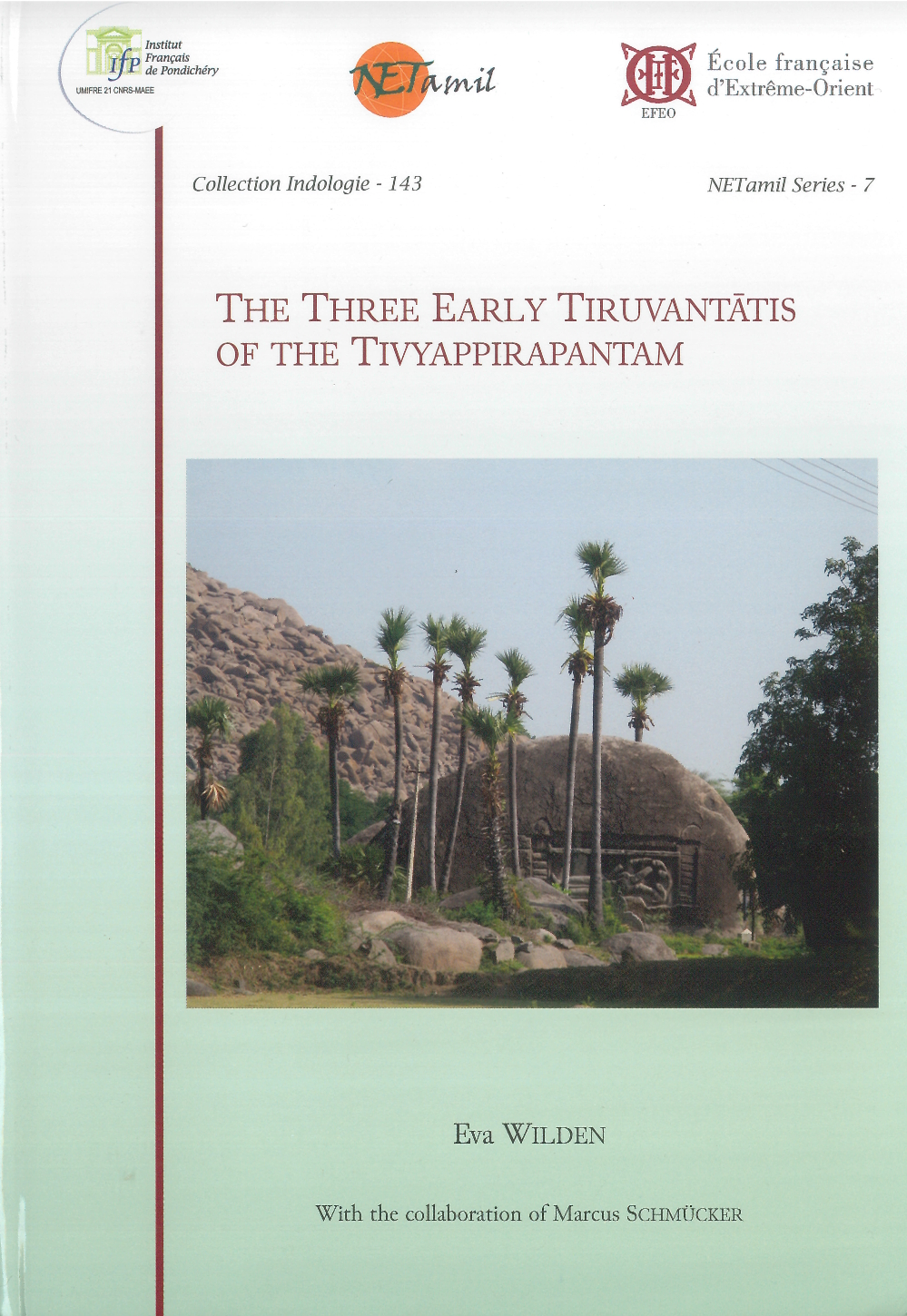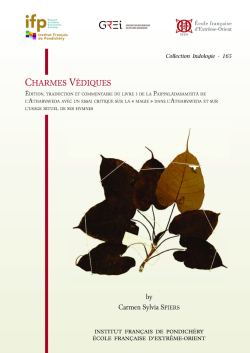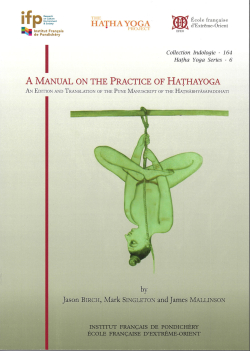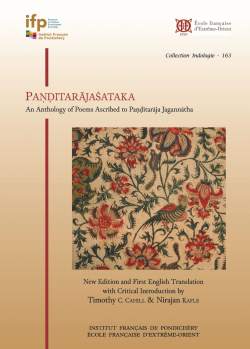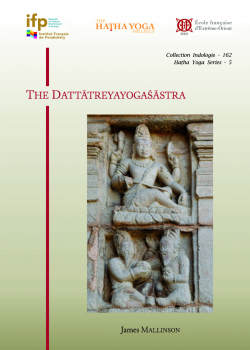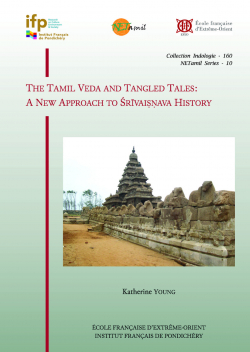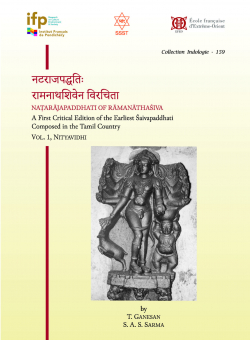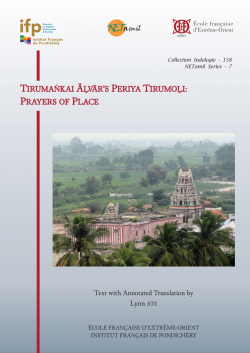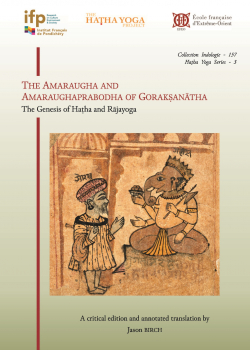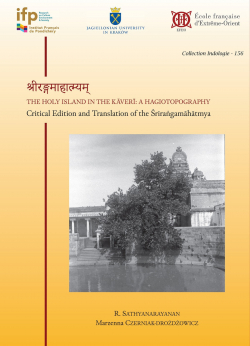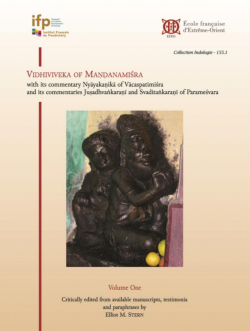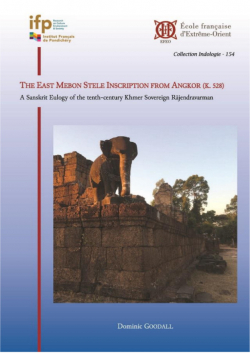The catalog of EFEO Publications includes works on a wide range of disciplines in the humanities and social sciences (archaeology, history, anthropology, literature, philology, etc.), centered on Asia, from India to Japan.
These publications address both specialists, and a wider public interested in Asian civilizations and societies.
The Three Early Tiruvantātis of the Tivyappirapantam
Annotated Translation and Glossary by Eva Wilden with the collaboration of Marcus Schmücker
Collection : Collection Indologie
Collection's number: 143
Editor: Wilden (Eva)
Edition: EFEO, Institut français de Pondichéry (IFP)
Publication date: 2020
Status : Available
38,00 €
ISBN-13 : 9782855392387
ISSN : 0073-8352
Width : 17.5 cm
Height : 24.5 cm
Weight : 1.12 kg
Number of pages : 569
Distributor : EFEO Diffusion, EFEO Pondichéry Contact : shanti@efeo-pondicherry.org
Geography : India
Language : English, Tamil
Place : Pondichéry
Support : Papier
Abstract
The early Antātis of the three Āḻvārs known as Poykaiyāḻvār, Pūtattāḻvār and Pēyāḻvār form the earliest layer in the Nālāyira Tivyappirapantam (“Four-thousand Heavenly Compositions”), the devotional corpus of the Śrīvaiṣṇavas, a religious group of devotees of the god Viṣṇu active to this day in Tamilnadu and beyond. Still in the earlier metre Veṇpā and thus part of the Iyaṟpā, the portion of the canon to be recited and not sung, they stand at the transition from Old to Middle Tamil and contain on the one hand many interesting transitional forms, on the other hand experiments with the young genre of devotional poetry, looking back to the earlier conventions of Akam and Puṟam, playing with them and partly going beyond them. This volume offers a metrical Tamil text with print variants and a first glance into a few manuscripts, a word-split transliterated version and an annotated English translation. It includes, along with an introduction and an epilogue on theology, an analytical glossary-concordance and three appendices concerned with names and epithets of the deities, with incarnations and mythic episodes, and with temples and toponyms.
Table of contents
Notes
You can also order this title with our Pondicherry center at the following address:
shanti@efeo-pondicherry.org
Or with the French Institute of Pondicherry at the following address:
library@ifpindia.org
Orders to India must be placed with our center in Pondicherry or the French Institute of Pondicherry.
About the editor
Wilden (Eva)
Eva Wilden has been a scientific member (maître de conférences) of the EFEO since 2003, working on the critical re-edition and the transmission history of the Tamil Caṅkam corpus. Since 2014, she heads the ERC project “NETamil: ‘Going fr om Hand to Hand – Networks of Intellectual Ex-change in the Tamil Learned Traditions’ ”, jointly hosted by the University of Hamburg and the EFEO. In 2015 she received the Indian presidential award “Kural Peetam”. Since June 2017 she is a professor of Tamil and Manuscript Studies at the University of Hamburg.
